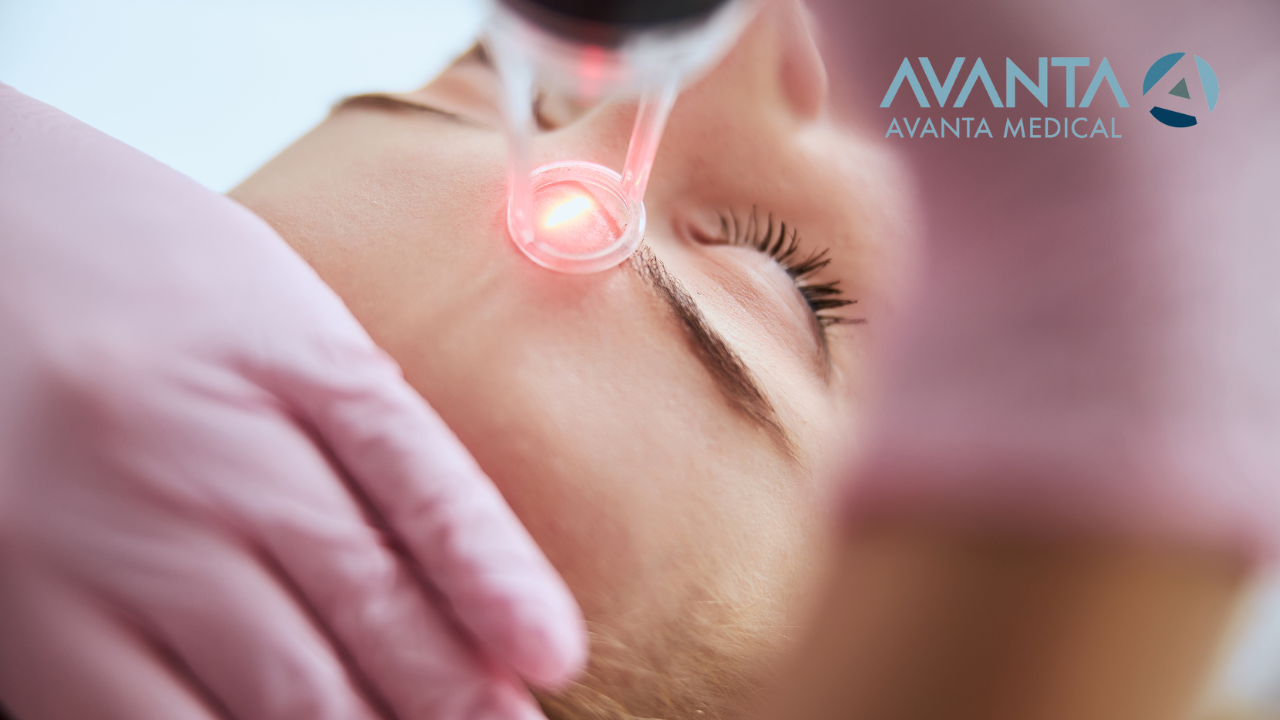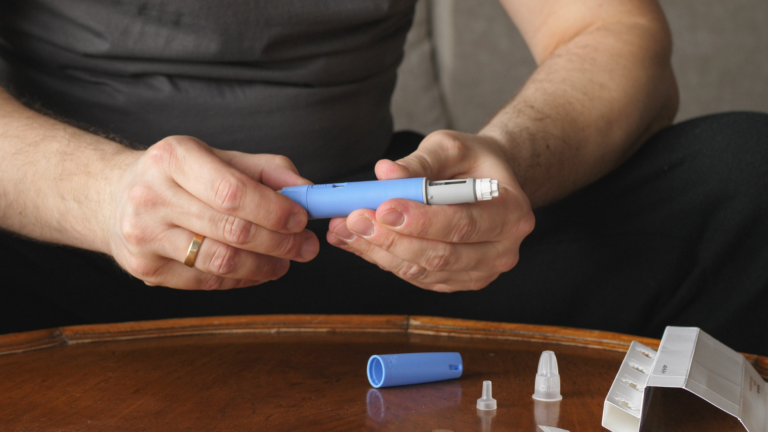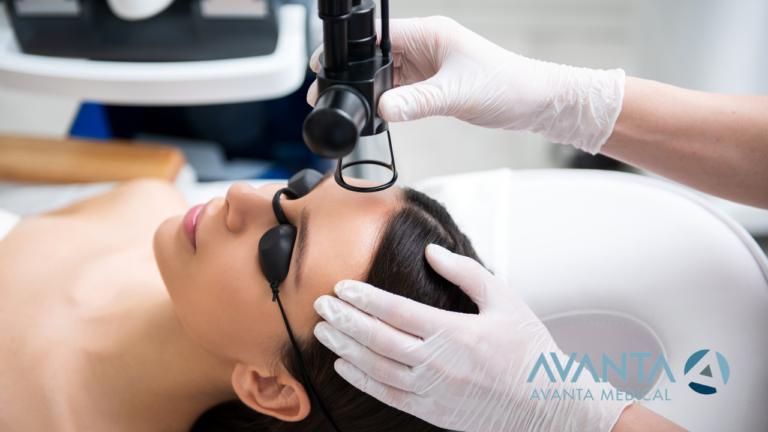Erbium vs CO2 Laser: Which Is Better for Your Needs?
When it comes to skin resurfacing and rejuvenation, both erbium and CO2 lasers are powerful tools in the world of aesthetics.
These two types of lasers have specific characteristics, advantages, and applications that make them suitable for different treatment goals.
Choosing between the two depends on factors like skin type, treatment depth, downtime tolerance, and the desired results.
Let’s break down the differences to help you decide which laser may be better for your clinic or patients in the ultimate comparison: Erbium vs CO2 laser.
Table of Contents
Understanding Erbium vs CO2 Lasers
Erbium Lasers
- Wavelength: Erbium lasers typically operate at a wavelength of 2940 nm.
- Mechanism: Erbium lasers target water in the skin, leading to precise ablation of superficial layers.
- Depth of Penetration: These lasers are ideal for treating fine lines, wrinkles, and mild skin irregularities due to their shallower penetration.
- Downtime: Minimal downtime compared to CO2 lasers, with patients often recovering within 3-5 days.
- Skin Types: Safer for darker skin tones due to reduced risk of hyperpigmentation or hypopigmentation.
- Applications:
- Fine lines and wrinkles
- Superficial scars
- Mild pigmentation
- Skin tightening
CO2 Lasers
- Wavelength: CO2 lasers typically operate at 10,600 nm.
- Mechanism: These lasers vaporize water in the skin and penetrate deeper than erbium lasers, stimulating collagen production.
- Depth of Penetration: Suitable for more aggressive treatments and deeper resurfacing needs.
- Downtime: Longer downtime, usually between 7-14 days, but with more dramatic results.
- Skin Types: Best suited for lighter skin tones, as there is a higher risk of pigmentation changes in darker skin.
- Applications:
- Deep wrinkles and fine lines
- Acne scars and surgical scars
- Severe sun damage
- Skin laxity
- Stretch marks
Curious about the differences between CO2 and Erbium lasers? This video breaks down the unique benefits and applications of each, helping you determine which laser technology is best suited for various skin treatments.
Key Differences Between Erbium vs CO2 Lasers
| Feature | Erbium Laser | CO2 Laser |
|---|---|---|
| Wavelength | 2940 nm | 10,600 nm |
| Depth of Penetration | Superficial | Deep |
| Downtime | 3-5 days | 7-14 days |
| Skin Type Suitability | Suitable for all skin types | Best for lighter skin tones |
| Results | Subtle and gradual | Dramatic and long-lasting |
| Pain Level | Mild discomfort | Moderate to significant discomfort |
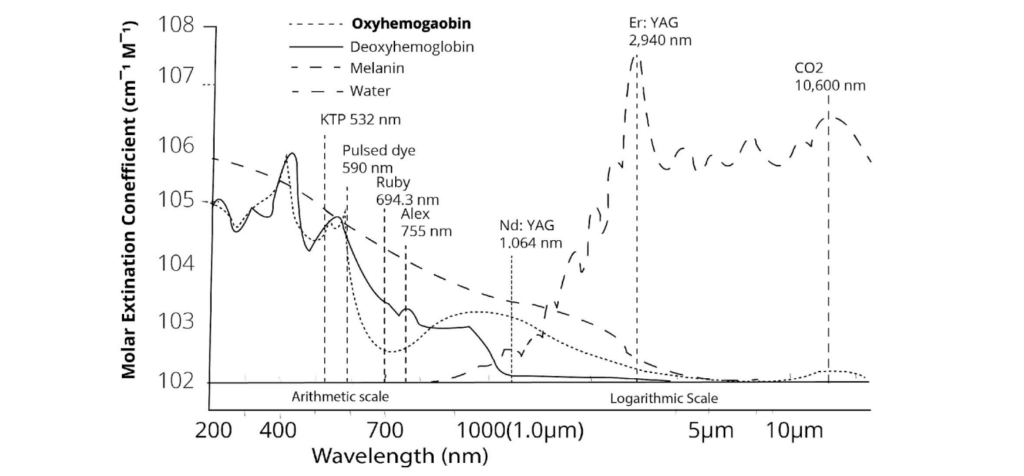
Examining the Laser Absorption Chart
The image above demonstrates the absorption properties of various laser wavelengths, showcasing how different lasers interact with chromophores like water, melanin, and hemoglobin in the skin.
Here’s what stands out in the context of erbium and CO2 lasers:
- Erbium Lasers (2940 nm): This wavelength is highly absorbed by water, making it incredibly precise for ablating superficial skin layers without excessive heat diffusion to surrounding tissues. This is why erbium lasers are ideal for mild to moderate resurfacing with minimal downtime.
- CO2 Lasers (10,600 nm): The CO2 laser wavelength also targets water but penetrates deeper into the dermis. This allows it to address more severe conditions like deep wrinkles, scars, and significant sun damage, albeit with longer downtime due to more thermal damage.
Understanding these absorption properties helps explain why erbium lasers are safer for darker skin tones while CO2 lasers excel in dramatic, deep resurfacing.
Which Is Better: Erbium vs CO2 Laser?
The choice between erbium and CO2 lasers depends on the individual’s skin condition, aesthetic goals, and lifestyle factors:
- Choose Erbium Laser If:
- Your patient prefers a faster recovery time.
- The goal is to address mild to moderate skin concerns.
- Treating patients with darker skin tones or sensitive skin.
- Choose CO2 Laser If:
- The patient is looking for dramatic results in treating deep wrinkles, scars, or extensive sun damage.
- They are prepared for a longer recovery period.
- The treatment is for lighter skin tones with minimal risk of pigmentation issues.
Introducing the CO2Pro Laser
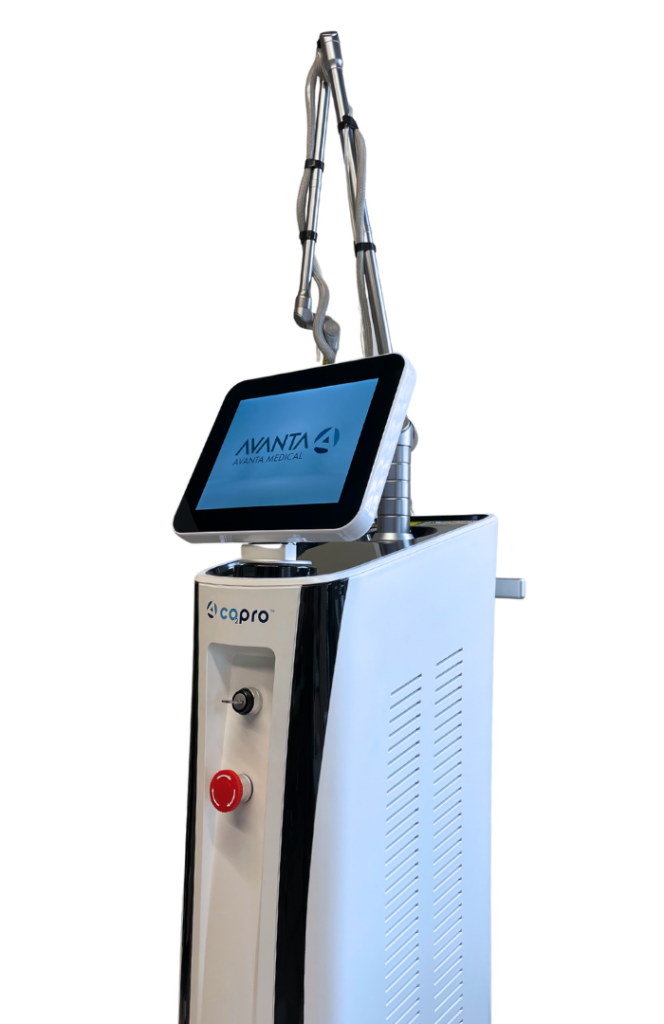
For clinics seeking a state-of-the-art CO2 laser solution, the CO2Pro® is an exceptional choice. This advanced fractional laser combines precision with power, offering:
- Customizable Treatments: Tailor settings to each patient’s unique needs, from mild resurfacing to deep scar revision.
- Enhanced Results: The 1060nm wavelength penetrates deep into the skin to stimulate collagen and promote long-term rejuvenation.
- Versatility: Effective for addressing wrinkles, acne scars, sun damage, and more.
- Patient Comfort: Designed with features to minimize downtime and maximize comfort.
The CO2Pro is ideal for clinics aiming to deliver transformative results with cutting-edge technology.
Combining Technologies
In many cases, a combination of erbium and CO2 lasers can provide comprehensive treatment by addressing both superficial and deep skin concerns.
For instance, erbium lasers can handle surface-level imperfections, while CO2 lasers target deeper layers for enhanced collagen remodeling.
Conclusion
Both erbium and CO2 lasers are highly effective tools for skin rejuvenation, but each serves unique purposes. Understanding the differences in wavelength, penetration depth, recovery time, and suitability for various skin types can help you make an informed decision for your practice or your patients.
Ultimately, the “better” laser is the one that aligns with the specific needs and goals of the individual undergoing treatment.
Ready to elevate your clinic’s offerings? Contact us today to learn more about the CO2Pro® laser and how it can transform your practice and your patient’s results.
FAQ: Erbium vs CO2 Laser
Which laser has a shorter recovery time?
The erbium laser has a shorter recovery time, typically 3-5 days, compared to the 7-14 days required for CO2 laser treatments.
Are erbium lasers safe for darker skin tones?
Yes, erbium lasers are safer for darker skin tones due to their reduced risk of hyperpigmentation or hypopigmentation.
What skin concerns are best treated with CO2 lasers?
CO2 lasers are ideal for addressing deep wrinkles, severe sun damage, acne scars, and skin laxity.
Can the CO2Pro laser be customized for different treatments?
Absolutely. The CO2Pro offers customizable settings to meet diverse patient needs, from mild resurfacing to deep scar revision.
What are the main advantages of combining erbium and CO2 laser technologies?
Combining both technologies allows for comprehensive treatments, addressing superficial imperfections with erbium and deeper concerns with CO2 lasers.

